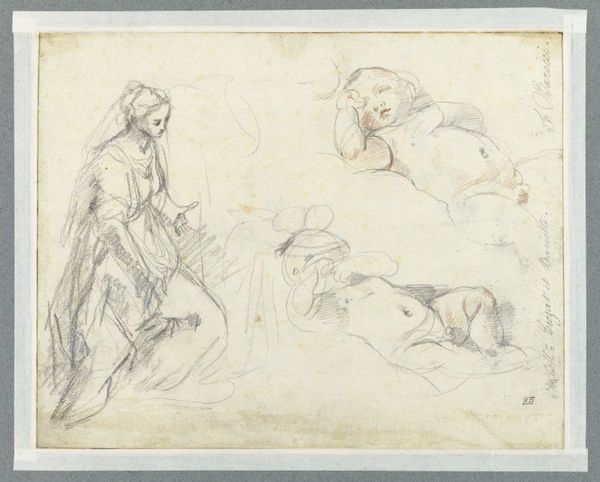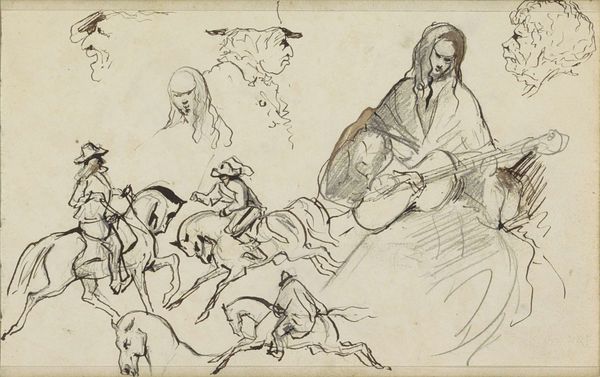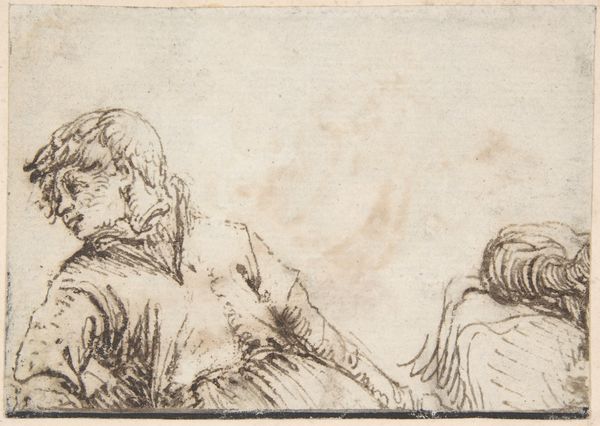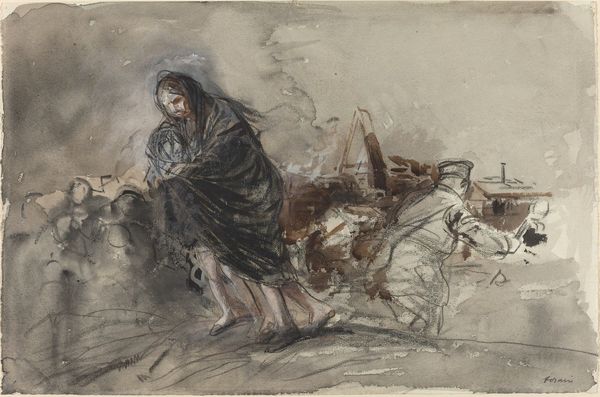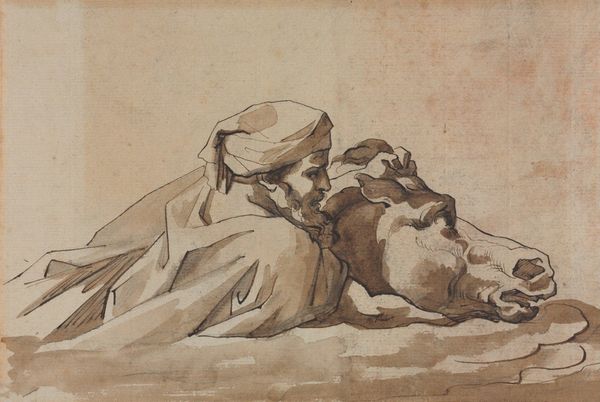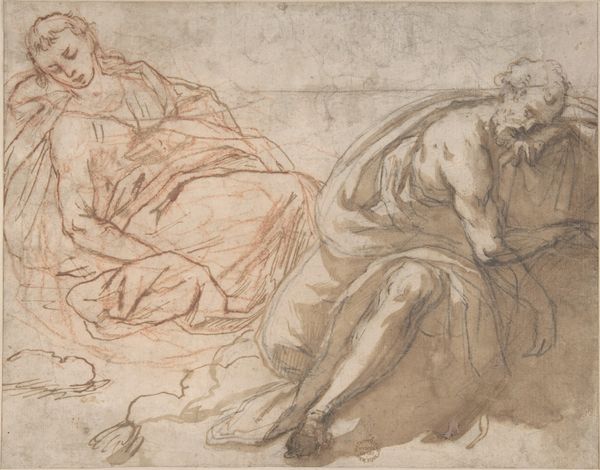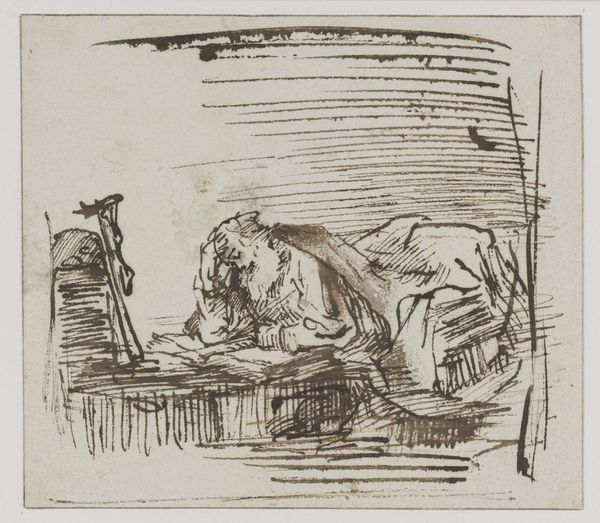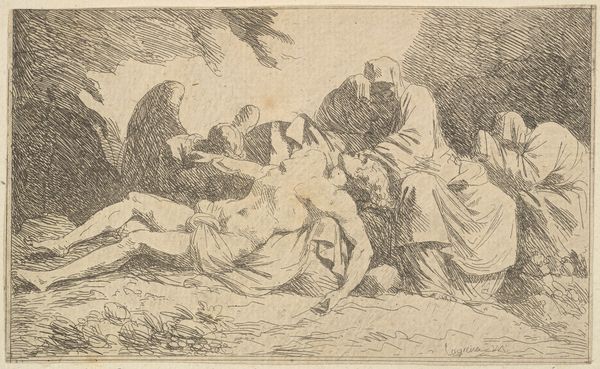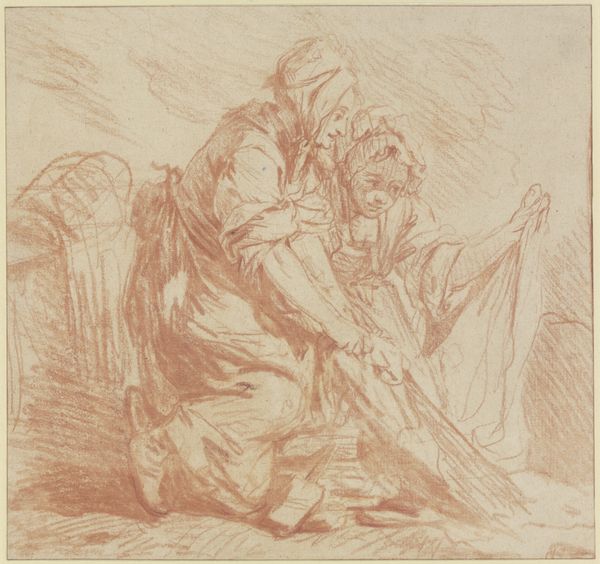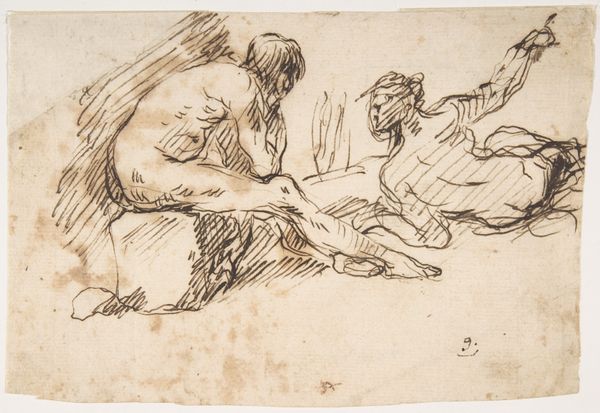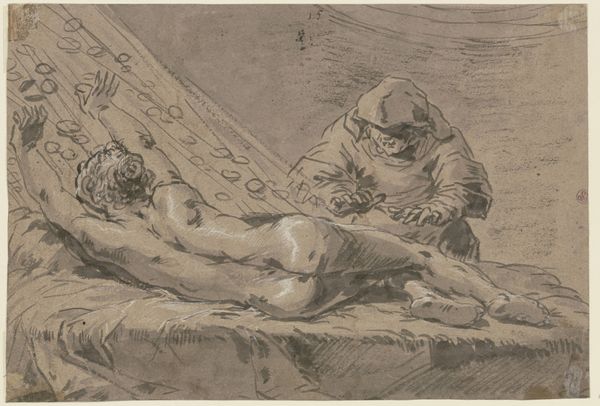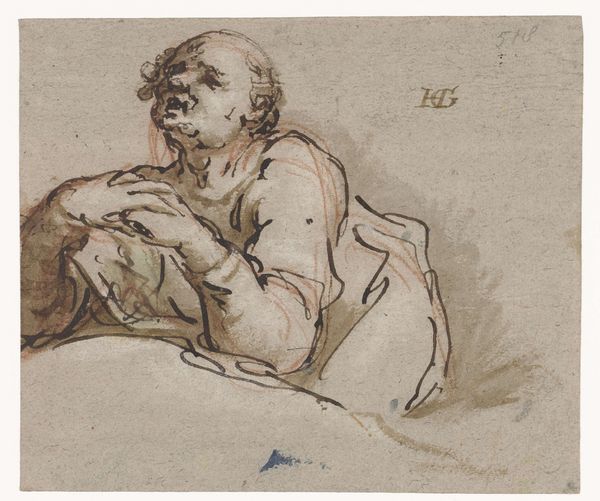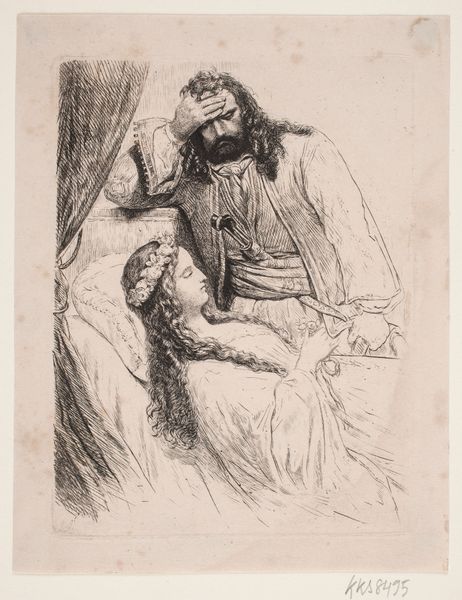
drawing, watercolor, ink
#
drawing
#
allegory
#
charcoal drawing
#
mannerism
#
figuration
#
watercolor
#
ink
#
nude
#
watercolor
Dimensions: 125 mm (height) x 160 mm (width) (bladmaal)
Curator: This is Giovanni de Vecchi's "Pietà," created sometime between 1536 and 1615. The medium here combines drawing in ink and charcoal with watercolor washes, and the result is something quite evocative. Editor: Indeed. It's stark and unsettling, isn't it? The vulnerability is palpable; I’m immediately struck by the contrast between the inert figure and the shrouded mourner looming over him. It's raw, yet there's a delicate grace to the linework. Curator: Absolutely. De Vecchi employs ink and charcoal to create a robust figure in the deceased Christ, and a ghostly, monumental Mary figure who hovers over him. Note the materiality – the absorption of the washes on the paper support creates soft forms from rough means. We see the hand of the artist in this preparatory sketch that could itself be considered a final work of art. Editor: The composition centers suffering, but beyond the obvious religious allegory, the drawing resonates with themes of loss, and even gendered dynamics of grief and power. The male nude is passive, offered up to the viewer. While the Madonna is actively performing the ritual of mourning, becoming an archetype of feminine sorrow. Curator: Precisely, it highlights a societal role in performance through artistic interpretation. Looking closer, you see how de Vecchi built forms from initial sketched outlines. These forms demonstrate academic ideas from art being disseminated at this time. These reproductive techniques became more accessible because of their reproducibility. Editor: Access, too, plays a key part in decoding this iconography. For the average viewer, the religious narrative gives way to a focus on bodily form, or the relationship between individuals that transcend historical setting to convey universally human interactions between caregiver and one cared for. I see vulnerability but also deep human connection, and perhaps most unsettling: the social construction of mourning rituals. Curator: I find your interpretation quite poignant. It reflects our changing engagement with religious symbolism through a social and emotional context. It certainly underscores the layers inherent in de Vecchi’s creation. Editor: And hopefully invites more perspectives for a richer conversation on human relations, grief, representation, and materiality through art.
Comments
No comments
Be the first to comment and join the conversation on the ultimate creative platform.
